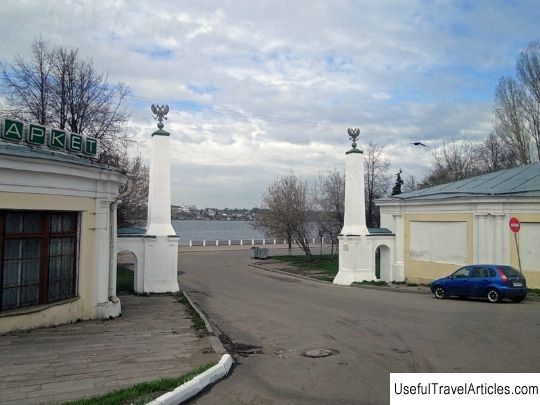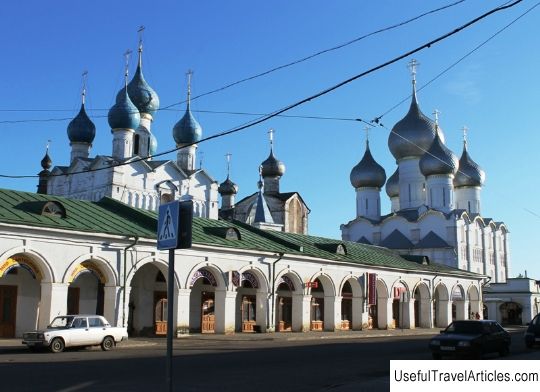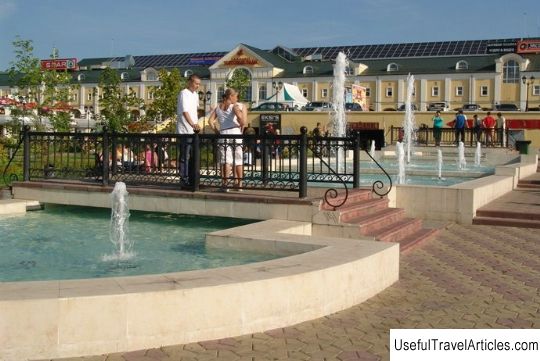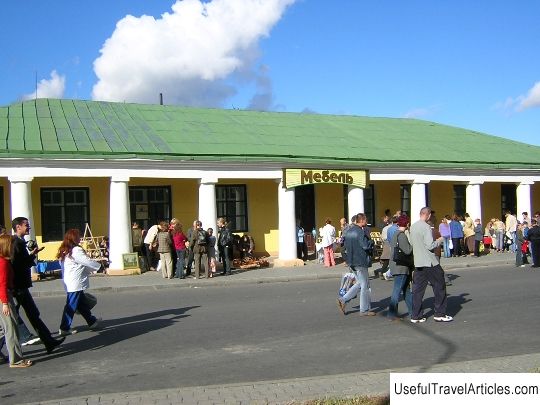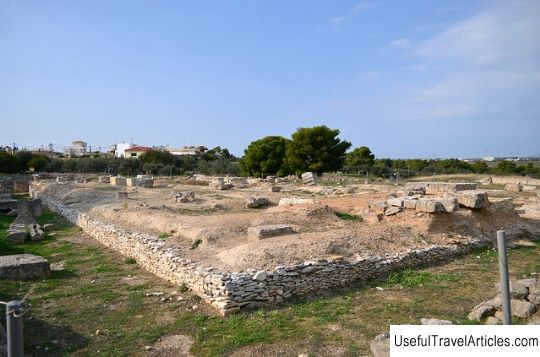Shopping malls description and photos - Russia - Golden Ring: Kostroma
Rating: 7,5/10 (409 votes) 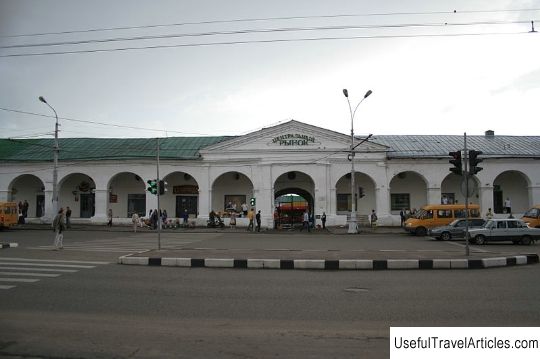
Shopping arcade description and photos - Russia - Golden Ring: Kostroma. Detailed information about the attraction. Description, photos and a map showing the nearest significant objects. Photo and descriptionIn the late 18th - early 19th centuries, the famous trade and warehouse complex or Trade Rows was built in the city of Kostroma. In terms of area, this complex occupies an area of several blocks, from Susaninskaya Square to the building of the former Kremlin in the central part of the city. The shopping arcade is an exemplary and indicative monument of traditional urban planning art dating back to the era of the city reform of Catherine. As is known from the history of Kostroma, in the 17th century its heyday reaches the peak of its economic development, which gives the right to call this city one of the most economically significant in all of Moscow Russia. In this regard, a huge shopping center was built in Kostroma, trade in which began on wooden benches. In 1773 there was a major fire as a result of which almost all trade shops, as well as houses and numerous warehouses, were completely destroyed by fire. Soon after the fire, a large-scale reconstruction of the entire city was carried out. According to the developed project, it was planned to build new rows of stone, while work began already at the beginning of 1775. As a basis, the "exemplary" project was approved, which was signed by the provincial architect from the city of Vladimir - Karl von Clair. The following architects were directly involved in the design and construction of new structures: V.P. Stasov, S.A. Vorotylov, N.I. Metlin, P.I. Fursov. One of the main characteristic features of the new layout was the traditional section of the merchant's shop, when each shop had a size from 4.5 to 7 m, which corresponded to one arched gallery span. The main retail space was located on the ground floor, while the basement and the second floor were adapted for storing and storing goods. The central shop office was located upstairs. Construction began with the so-called Red Rows, which were also called Gostiny Dvor; the work was carried out under the direction of Stepan Andreevich Vorotilov in 1789. The first building was lined up in the form of a rectangle, the size of which reached 110 by 160 meters. In the process of building the hull, it was necessary to solve an important problem. The most ancient temple of Kostroma - the Church of the Savior in Riadi - was located at the planned site of the building. Initially it was wooden, but in 1766 a stone church was built here, while the architects managed to accurately fit the temple into the panorama of the Red Rows. The Red Rows got their name due to the fact that only "red" goods were traded here - expensive fabrics, valuable furs, leather goods and various books. Construction work proceeded quite quickly, and in March 1791 the Kostroma Duma announced that 33 shops were already fully ready, while 19 were being completed and materials were prepared for 11 shops - the total number of planned counters was 86. The completion of construction work took place in 1793. As for the Gostiny Dvor, its galleries were equipped with a smooth ceiling, lined with stone slabs and decorated with signs. It is worth noting that the shop windows have become not only the epicenter of the trading life of Kostroma, but also a walking place. The largest building of the Trading Rows was the Big Flour Rows, the size of which reached 122 by 163 meters. In 1791, it was planned to build 52 shops, which would have been intended for retail or wholesale trade in flax, fodder and flour, but only 26 were ready. The rectangular rooms of the Great Flour and Red Market Rows were equipped with rounded corners, which was done specially so that passing carriages and carriages did not touch the premises when turning. Small rows were also built, which were intended for the haberdashery trade. The new rows fit perfectly into the overall picture, taking advantage of the area of the entire shopping center. After a while, next to the already existing trade shops, they built Bread, Gingerbread, Fish, Live fish, Kvass, Shornye, Meat, Butter, Tar rows, Vegetable, Tobacco rows. The entire architectural ensemble of the Trade Rows was built over several decades. As a result of all the work, they occupied an impressive part of the territory of the main square of the city, as well as the descent to the Volga.        We also recommend reading Furniture Museum description and photo - Russia - Moscow: Moscow Topic: Shopping malls description and photos - Russia - Golden Ring: Kostroma. |
